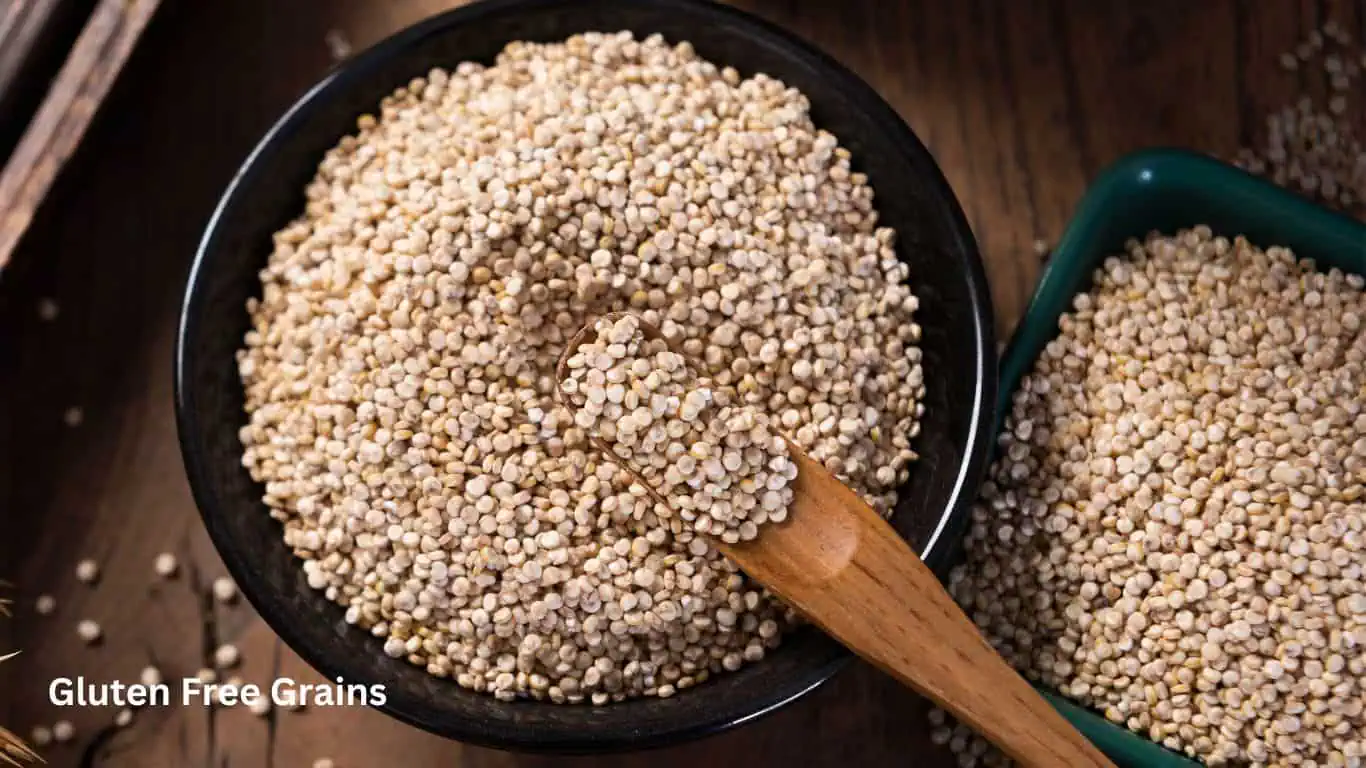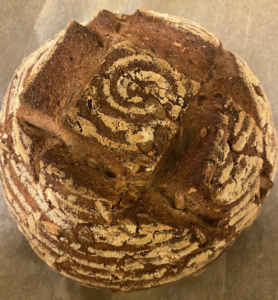Gluten-Free Substitutes for Farro: The Best Celiac-Safe Grains
This post contains affiliate links. I may receive a small commission if you purchase something through these links, which helps me continue to deliver great content with no extra cost to you. I never recommend products I wouldn’t use myself!
Farro’s nutty, chewy texture has earned it a spot in everything from salads to grain bowls. But for those of us living gluten-free, whether due to celiac disease or gluten sensitivity, farro is a no-go. I ran into this firsthand when my husband and son were diagnosed with celiac disease. At first, I thought our grain bowl days were over. Spoiler: they’re not!
We’ve since discovered a lineup of gluten-free grains that deliver on taste, texture, and nutrition, without the gluten. Whether you’re craving a chewy bite, a nutty flavor, or just a wholesome farro alternative, this guide covers the best gluten-free substitutes to suit your needs.
What Makes Farro So Special (And Why You Need a Substitute)
Farro is an ancient wheat grain high in protein, fiber, and B vitamins, but it’s definitely not gluten-free. For those with celiac disease or gluten intolerance, even a trace can trigger symptoms. The good news? Plenty of naturally gluten-free grains can take farro’s place in your favorite recipes.
When choosing a substitute, consider:
✔️ Texture (chewy vs fluffy)
✔️ Nutritional value
✔️ Cooking time
✔️ Flavor
✔️ Availability
Our Favorite Gluten-Free Farro Substitutes
| Substitute | Flavor/Texture | Nutrition Perks | Best Used In |
|---|---|---|---|
| Brown Rice | Nutty, chewy | High in fiber, low glycemic | Bowls, sides, stir-fries |
| Quinoa | Fluffy, slightly nutty | Complete protein, fast-cooking | Salads, soups, grain bowls |
| Buckwheat | Earthy, chewy | High in fiber, protein | Stir-fries, breakfast bowls |
| Oat Groats | Mild, hearty, slightly nutty | Fiber, B vitamins (use certified GF) | Breakfast, stuffing, soups |
| Millet | Mild, fluffy | Low GI, rich in magnesium | Porridge, veggie patties, sides |
| Sorghum | Neutral, chewy | High in fiber and antioxidants | Stews, soups, casseroles |
| Amaranth | Nutty, soft | Complete protein, iron-rich | Porridge, pilaf, baked goods |
| Teff | Slightly sweet, dense | Iron, calcium, resistant starch | Injera, side dishes, hot cereals |
| Wild Rice | Earthy, chewy | High in protein, great in blends | Grain bowls, holiday sides |
Cooking Tips for Each Substitute
Here’s how to get the best flavor and texture from your farro stand-ins:
Wild Rice: Rinse, then simmer 45 minutes. It holds its bite and looks beautiful in mixes.
Brown Rice: Soak for 30 minutes to reduce cooking time and get fluffier grains.
Quinoa: Rinse before cooking to remove bitterness. Use a 2:1 water ratio.
Buckwheat: Toast for a nuttier flavor or soak briefly before simmering.
Oat Groats: Soak overnight, cook with plenty of water (4:1 ratio).
Millet: Rinse, then simmer for 20 minutes. Fluff with a fork.
Sorghum: Simmer 45–60 minutes; try pressure cooking to speed it up.
Amaranth: Use a 2.5:1 water ratio; it’s slightly sticky, great in porridge.
Teff: Needs more water (3:1) and constant stirring; great in breakfast bowls.
Where to Buy These Gluten-Free Grains
Trader Joe’s
- Organic Brown Rice
- Tricolor Quinoa
- Gluten-Free Oats
- Buckwheat Groats
Costco
- Kirkland Organic Quinoa
- Brown Rice
- Millet
Health Stores / Amazon / Whole Foods
Always check for certified gluten-free labeling, especially on oats.
Switching from farro doesn’t mean sacrificing flavor. These gluten-free substitutes are more than stand-ins, they’re stars in their own right. Whether you’re making comforting risottos, refreshing salads, or hearty bowls, there’s a gluten-free grain for you.
And hey, don’t be afraid to experiment. That’s how we discovered my son’s obsession with quinoa flatbread and my husband’s love for quinoa tabbouleh. Gluten-free grains = freedom to explore.
Have you found your perfect swap? Tried something new with one of these grains? Drop your tips and favorite recipes in the comments!
FAQs: Gluten-Free Farro Substitutes
Is there a gluten-free version of farro?
No, farro is a type of wheat and naturally contains gluten. There is no certified gluten-free version of farro. However, gluten-free grains like brown rice, quinoa, and buckwheat mimic farro’s texture and flavor.
What’s the best gluten-free substitute for farro in soups and stews?
Quinoa and brown rice are top choices for soups and stews. They hold their shape well and add a satisfying chew, similar to farro. Buckwheat groats are also a great hearty option.
Can I use quinoa instead of farro in a salad?
Yes! Quinoa is a fantastic gluten-free substitute for farro in salads. It has a light, nutty flavor and fluffy texture, and it pairs well with roasted vegetables, dressings, and fresh herbs.
Which gluten-free grain is closest in texture to farro?
Buckwheat groats and brown rice offer the most similar chewy texture to farro. Both work well in savory dishes and provide a hearty bite.
Are oats a safe substitute for farro if I have celiac disease?
Yes, but only certified gluten-free oats. Regular oats are often cross-contaminated with wheat during processing. Choose brands that are labeled gluten-free to ensure safety.
Where can I buy gluten-free farro alternatives?
You can find great gluten-free farro substitutes at Trader Joe’s, Costco, Whole Foods, and online retailers. Look for certified GF products like brown rice, quinoa, millet, and oat groats.
Can I use wild rice instead of farro?
Absolutely! Wild rice has a chewy texture and nutty flavor similar to farro. It’s also gluten-free and works wonderfully in salads, soups, and grain bowls.







